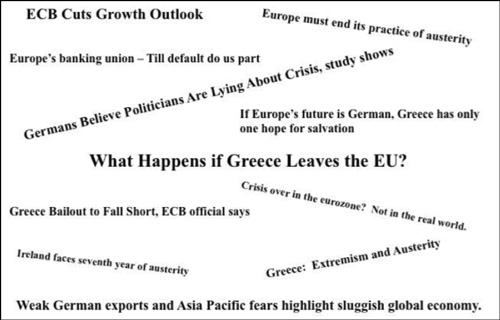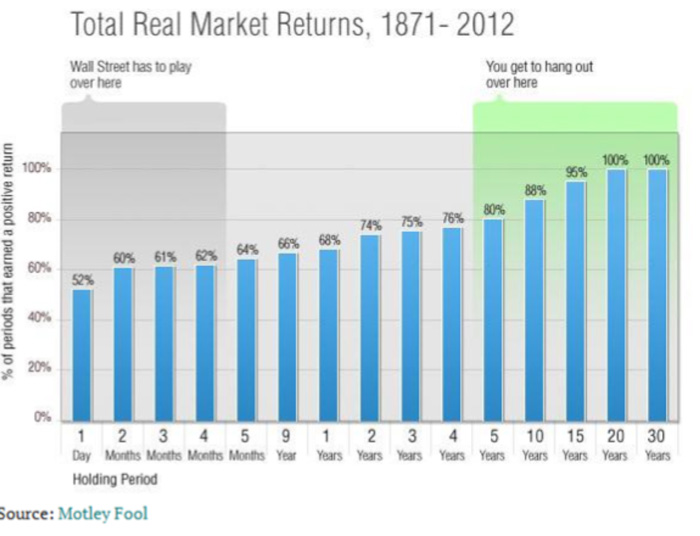![]() Contributed by: Angela Palacios, CFP®, AIF®
Contributed by: Angela Palacios, CFP®, AIF®
Diversification
The S&P 500 ended 2022 negative by 18.11%, while the Bloomberg US Aggregate Bond Index was down 13%, and international investments, as represented by the MSCI EAFE, were negative by 14.45%
Stocks and bonds both being negative for 12-month returns is exceptionally rare and has only occurred in 2.4% of 12-month rolling periods in the past 45 years.
Many well-known target data and diversified strategies allocated roughly 60% stocks and 40% bonds down in the 17-18% range for the year. (Source: Morningstar)
Fixed Income
The Federal Reserve raised interest rates seven times in 2022 to combat inflation.
Interest rates moved from 0-.25% all the way up to 4.25-4.50%
This year's sharp increase in rates and, thus, negative performance in bonds has been an anomaly and is unlikely to repeat.
Volatility Driven By
Russia/Ukraine conflict has lasted far longer than anyone had predicted.
Inflation is retracing its steps stubbornly slow.
Interest rate increases.
China's zero covid policy up until their elections. They then moved from one extreme to the other by relaxing all restrictions following unrest from the population. Now, they are dealing with a wave of Omicron hitting the population.
Cryptocurrency woes.
Elections and Politics
Split congress suggests there will be no major legislation this year. Gridlock is usually positive for equity markets, but debt ceiling expansion could cause a standoff, and we may hear rumblings of a government shutdown in the fall. In the past, this has not had a long-term impact for markets.
Secure Act 2.0 – Check out this blog written by Kali Hassinger for more information. We will also take a few minutes to review the changes at our upcoming investment event.
Interest rates
The biggest story of 2022 has been how drastically the yield curve has shifted. Check out the chart below showing where the yield curve was at the end of 2021 (Dark gray line) and where it finished in November this year (blue line). The shaded area shows the range of the yield curve over the past ten years. Not only is the yield curve no longer upward-sloping, as it is currently inverted, but it also sits near the high end of yields we have seen over the past decade. While this created short-term negative returns for bonds with both short and long duration, yields are again a meaningful part of future projected returns. Bonds continue to deserve a meaningful allocation in most portfolios.
Inflation
Another major headline of the year has been inflation. The Federal Reserve (the Fed) has shifted the yield curve aggressively by raising short-term rates this year in an effort to combat inflation. We are seeing gathering evidence of inflation coming down with improving supply chains and gas prices coming down. This evidence gave the Fed confidence to slow to a 50 bps increase in December as opposed to the string of .75% increases leading up to this past month. The most recent inflation reading came in at 7.1% for December. You can see in the chart below the month-by-month print of CPI throughout 2022 influencing the Fed decisions.
Looking under the hood at what drives inflation numbers, we can see port congestion has also improved, which is a lead indicator of inflation. Remember in early 2022 when I shared a chart showing 100+ ships waiting to get into the Port of Los Angeles and Long Beach? Now, it hovers below ten – bottlenecks are reducing. The chart below shows the relationship between slower delivery times (blue line) equating to higher inflation (gray line) and vice versa, with faster delivery times equating to lower inflation.
Chart of the Week: Source: BLS, S&P Global, J.P. Morgan Asset Management.
We should see inflationary pressure continue to lessen in the coming months. A reversal of China's zero Covid policy will also start to decrease delivery times of items coming out of China.
Consumer trends are also a leading indicator you can watch, and right now, they are walking a thin line as credit card balances are at all-time highs while savings rates are at all-time lows. This can not continue perpetually, so as consumers slow their spending, we should see inventories build and prices decline as retailers struggle to clear shelves.
As the Fed tries to move toward a target of 2% inflation, risks for the Fed's overtightening are my next worry. Tightening too much could determine if the economy goes into a recession and how deep of a recession. While a mild to moderate recession is likely priced in now, it is important to remain defensive with a well-diversified portfolio.
Housing Affordability and Inflation
With mortgage rates rising, many worry about home affordability and a retreat in home prices. While higher rates do not impact existing mortgages, they will impact new mortgages. People will be less likely to sell their homes as their rates are locked in at such low levels, meaning there will be a lack of homes on the market for new household formation. Typically, when the U.S. falls into recession, housing drops with it. Most of us remember home values falling swiftly and significantly during the Great Recession. A drop like that is unlikely to occur this time, as there are many factors that are different now. Mainly, there is not a glut of homes as there was in 2008-09. Demand for homes is still much higher than the supply due to the lack of building over the past decade, so while prices may come down from current levels, they will not be by much.
2023 should bring with it continued inflation relief and the potential for recession. We continue to remain cautious by holding a shortened duration in our bond portfolios and holding some extra cash for a time when the technicals of the equity markets are pointing toward downside exhaustion and healthy bottoming activity. We continue to rebalance as needed, watch our trusted indicators, and maintain our process over trying to predict what is to come. We know investing in a year like 2022 can be challenging to stay disciplined through, and we are humbled and honored by the trust you place in us to guide you through these times.
Angela Palacios, CFP®, AIF®, is a partner and Director of Investments at Center for Financial Planning, Inc.® She chairs The Center Investment Committee and pens a quarterly Investment Commentary.
Any opinions are those of the Angela Palacios, CFP®, AIF® and not necessarily those of Raymond James. The information contained in this report does not purport to be a complete description of the securities, markets, or developments referred to in this material. There is no assurance any of the trends mentioned will continue or forecasts will occur. The information has been obtained from sources considered to be reliable, but Raymond James does not guarantee that the foregoing material is accurate or complete. Any information is not a complete summary or statement of all available data necessary for making an investment decision and does not constitute a recommendation. Investing involves risk and you may incur a profit or loss regardless of strategy selected. The S&P 500 is an unmanaged index of 500 widely held stocks that is generally considered representative of the U.S. stock market. The MSCI EAFE (Europe, Australasia, and Far East) is a free float-adjusted market capitalization index that is designed to measure developed market equity performance, excluding the United States & Canada. The EAFE consists of the country indices of 22 developed nations. The Bloomberg Barclays US Aggregate Bond Index is a broad-based flagship benchmark that measures the investment grade, US dollar-denominated, fixed-rate taxable bond market. Keep in mind that individuals cannot invest directly in any index, and index performance does not include transaction costs or other fees, which will affect actual investment performance. Individual investor's results will vary. Past performance does not guarantee future results. Diversification and asset allocation do not ensure a profit or protect against a loss. Dividends are not guaranteed and must be authorized by the company's board of directors. Special Purpose Acquisition Companies may not be suitable for all investors. Investors should be familiar with the unique characteristics, risks and return potential of SPACs, including the risk that the acquisition may not occur or that the customer's investment may decline in value even if the acquisition is completed. Investing involves risk and you may incur a profit or loss regardless of strategy selected. Past performance is not a guarantee or a predictor of future results. Raymond James and its advisors do not offer tax or legal advice. You should discuss any tax or legal matters with the appropriate professional.












